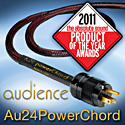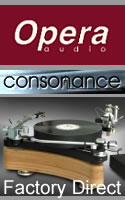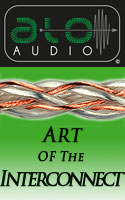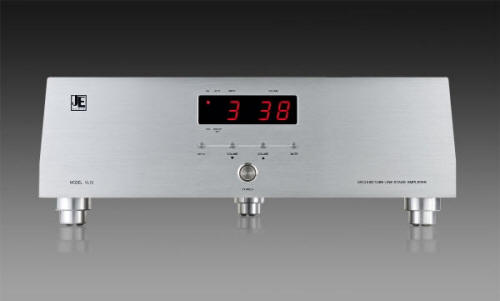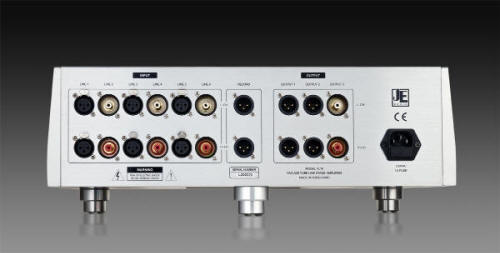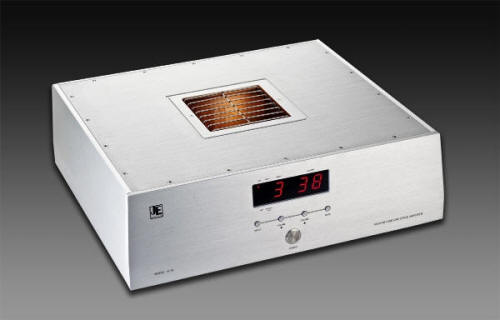|
|
You are reading the older HTML site
Positive Feedback ISSUE 59
je audio VL 19 Balanced Line Stage as reviewed by Mike Wechsberg
About two years ago I reviewed the VL20 Line Stage from JE Audio, which is a relatively new Hong Kong-based company with a growing line of high quality, yet affordable tube electronics. I thought the VL20 was an excellent line stage and a "screaming bargain" at its price. The chief shortcoming was a lack of a remote control to adjust volume. Well, a couple of months ago I received the new VL19 Line Stage from JE Audio and, low and behold, it has a very sweet remote. I'd guess I was not the only one pointing out the importance of remotes to today's listening systems, but I am glad that John Lam, the talented designer of JE Audio's components, chose to respond. The VL19 has a number of other upgrades over the VL20 raising the price to a still-reasonable $3800. The VL19 is a fully balanced design that uses Sovtek 6H30Pi tubes made famous in this country by Balanced Audio Technology (BAT), which calls them "supertubes". While similar to the ubiquitous 6922's used in numerous preamps and lines stages, they are not compatible. According to information on the web, the 6H30 has a plate resistance that is four times lower than the 6922's. It also has higher transconductance—with the resulting gain being just slightly lower than that of the 6922. The VL19 employs two 6H30Pi's per channel in a wideband (>500kHz bandwidth) topology with no global negative feedback. The four tubes are visible from the top of the unit through a small cage. The cage acts like a chimney to aid cooling of the tubes while keeping the rest of the electronics enclosed in a covered chamber. The tubes, each sporting a damper ring, are accessible through the bottom of the chassis without having to undo a large number of screws. According to JE Audio, the most significant differences between the VL-19 and its predecessor, the VL-20 line stage include:
The heavy VL-19 chassis (34 lbs.) is brushed aluminum and the two side panels are tilted slightly inwards to give the unit a more stylish look than a plain rectangle. The center of the front panel bears an LED display that shows the input number and the setting of the volume control, which has 99 steps. Below the LED are four push buttons that select among the 6 inputs (3 balanced and 3 single-ended), volume up, volume down, and mute. Below these three buttons is a single, larger button that serves as the on-off switch. When the on-off button is switched on, the LED display counts down from 30 while the tubes come up to temperature. All the buttons have a solid feel befitting a high-quality component. The chassis is supported on three large metal feet that each have three rounded, compliant protrusions for damping. The rear panel has the balanced and single-ended input jacks, a balanced line-level record output, plus two balanced volume-dependent outputs and one single-ended output. There is also a standard AC jack but no power cord is provided.
The small remote control has individual buttons for the 6 inputs plus additional buttons for volume, mute and display on/off. The rated input impedance is 50kΩ single-ended and 100kΩ for the balanced inputs. The output impedance is 1.1kΩ for each phase. The VL19 is rated at <0.08% total harmonic distortion at 2V output and 85dB signal-to-noise ratio. Complete specifications are available on the JE Audio web site listed at the end of the review. The build quality of the unit is first rate, like the VL20. I've made too many changes to my reference system since the VL20 review so I can't make a unit-to-unit comparison from memory. In fact, I had to hold up the VL19 review for a few weeks while I was calibrating my ears to the latest change, namely the addition of two sets of Bybee speaker bullets to my Marten Miles II speakers. Dave Clark, Bob Levi and Francisco Duran have all glowed emphatically about various Bybee tweeks in the pages of PFO during the last year or so. I've heard the Bybee effect in several systems recently so decided to get me some of the magic by adding Bybees to my speakers via kits supplied by Michael Garner at the Tweek Geek. The Bybees are somewhat mysterious devices that address deleterious electromagnetic effects at low to midrange frequencies (typically below 2kHz). They clean up the lows and effectively add another half octave or so of bass. In addition they improve coherency and pace over the entire frequency spectrum and improve clarity as well. The effect is not subtle and clearly audible on all the modified systems I have sampled. Inventor Jack Bybee advises the bullets be installed as close to the speaker drivers as possible and my intent was to install them inside the speaker cabinets. Since my speakers are bi-wired I had to purchase two kits, one for the woofer and a second to service the midrange and tweeter. Cracking open my Marten speakers proved to be more complicated than originally expected (I did not want to risk damaging one of the quite expensive ceramic drivers) so I ended up installing the bullets on the outside of the speaker in series with my speaker cables. This is suboptimal but still resulted in a very noticeable improvement in bass definition, extension and dynamic range. Further, midrange transparency took a big step forward and the entire system timing was improved so transients, both low and high level, were serviced better. The highs came forward slightly, an effect I am still trying to adjust to, but even with this change an already good system became much better.
After listening to the modified speakers for a couple of weeks I was ready to start evaluating the JE Audio VL19 line stage. I inserted it in place of the E.A.R. 868 preamp using Kubala-Sosna Elation balanced interconnects between the E.A.R. 890 amplifier and E.A.R. Acute 3 CD player. I know JE Audio thinks their line stages work best in an all-balanced system so that is what I used. I did not try the single ended inputs or outputs. For a power cord for the VL-19 I used the discontinued Harmonic Technology Magic Reference 2, which has always pleased me the most on the E.A.R. preamp. Other power cords in the system were Kubala-Sosna Emotion. All the power cords were plugged into my PS Audio Power Plant Premier conditioner. The VL19 requires 50 - 100 hours of break-in and I was told my unit was broken in at the factory, but at first listen, after an hour or so of warm-up, I thought the sound was a little bland and unfocused, so I broke it in further for 30 - 40 hours over a couple of weeks (3 or 4 hours at a time as recommended by JE Audio). This improved the sound significantly so I recommend you take the time to break in the line stage before any serious listening. At the summary level, the VL19 sounds like many fine tube amps with a sonic signature on the warm side, fleshed out midrange, realistic imaging and great dynamics. It takes a while to appreciate its special properties. I listened first to a number of vocal recordings, male and female, and from both jazz and pop genres. The VL19 did a great job on all of these giving a good illusion of voices being in the room with me and with an accurate tonal palette. In comparison to my reference preamp most vocalists imaged a little more forward and depth was a shade shortened. Recordings of small instrumental groups also sounded great with clear musical lines and a sound that projected into the room, but I felt the highs were shelved down slightly and some detail and air were missing compared to my reference and some of the more expensive line amps I've sampled recently. I found myself wanting to shift my listening position a little closer and higher than normal in an effort to find a little bit more high frequency. The VL19 might fare better with different cables, some with a more prominent high end and more bloom to the low end compared to the very flat Kubala-Sosna cables. For example, based on previous experience, the silver series cables from Cable Research Labs might be a better match but I did not have any of these on hand to try. The VL19 held up the low frequency end of the spectrum well on my newly Bybee-ed speakers with good extension, dynamic range and definition. Not as good as some of the best solid-state preamps or line stages I have heard (all much more expensive than the VL19) but more than satisfying. Once again, sitting a bit closer to the speakers seemed to improve bass definition a tad, which may have been a room effect rather than anything having to do with the line stage. The overall sound of the line stage was very engaging and clean and seemed to cry "play me loud", which I did most of the time. The VL19 seemed to really come into its own when playing classical orchestral music. I don't know anything about the musical tastes of the designer, but I felt the line stage was voiced to sound best on classical music. Here the slight midrange bloom helped to draw me into the music and the tonal balance seemed just perfect. Soundstaging was wide and deep and individual instruments were portrayed with distinct images. The VL19 has great dynamics at both the low end and high end of the loudness spectrum and this was very evident on "big" classical numbers. These effects were heard best when the volume was tipped up, something easy to do with the remote control. I was able to easily follow musical lines and individual instruments were portrayed in their own space surrounded by air. Hall sound was clearly discernible during pauses in the music. I did feel the VL19 did not have quite as much "get up and go" as my reference. On some music I thought the timing was a bit sluggish, especially at low frequencies. As an experiment I tried plugging the VL19 directly into the wall instead of going through my power conditioner. This did seem to improve timing accuracy and pace, but unfortunately it also brought some harshness to the high frequency end of things, extending down to the upper midrange. This might be due to the poor AC power quality at my home (I listened mainly at night), therefore, I suggest you try the VL19 both ways, that is, with and without power conditioning, to see which offers the best overall experience. Compared to some of the best and most expensive preamps/line stages I have sampled recently the VL19 holds up very well, especially for the price, but was lacking just a bit in transparency and detail. In looking at my review of the VL20 two years ago I made similar comments, but in the intervening time the resolution and transparency of my reference system has improved significantly. I conclude that the VL19 brings you closer to the music than its predecessor and does a terrific job against the competition in its price range. More experimentation with cables and matching components (JE Audio also makes handsome and affordable tube power amps but I haven't heard any of these) is warranted and could result in even better sound than I was able to achieve. The JE Audio VL19 line-stage provides an excellent sonic experience, makes a great visual statement, has just about all the convenience features one would want in a line stage, is built to a high quality standard and is reasonably priced. I certainly recommend it to your attention. You can buy the VL19 through the JE Audio web site or through one of their distributors worldwide. The company has recently signed on a distributor for the US and Canada (see below) that will be handling distribution and repair of JE Audio products for the majority of our readers. In addition, I'm told there will soon be a few high-end audio stores that will be carrying the brand in Canada and the US as well. This is good news as it will bring the excellent sound of JE Audio to more audiophiles in North America. Mike Wechsberg
VL19
Line Stage
JE Audio US/Canada Distributor
Worldwide Wholesales
|
